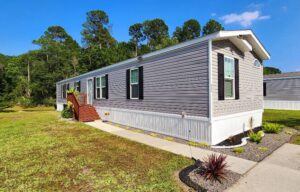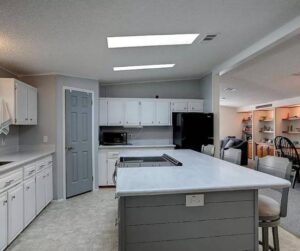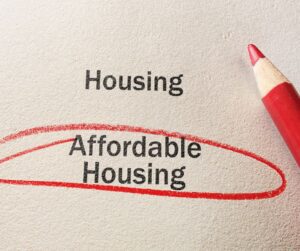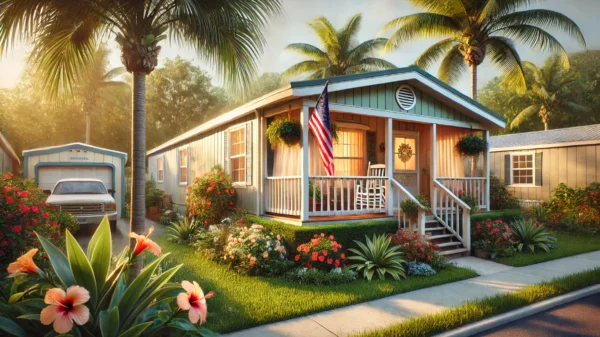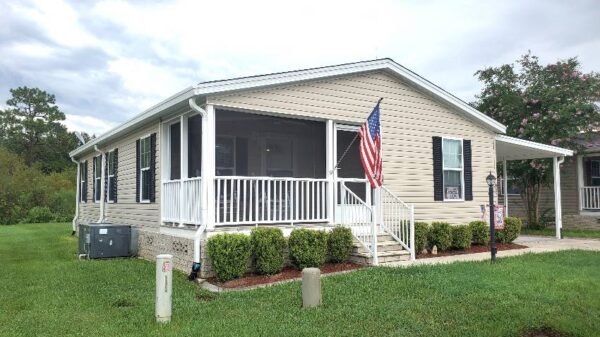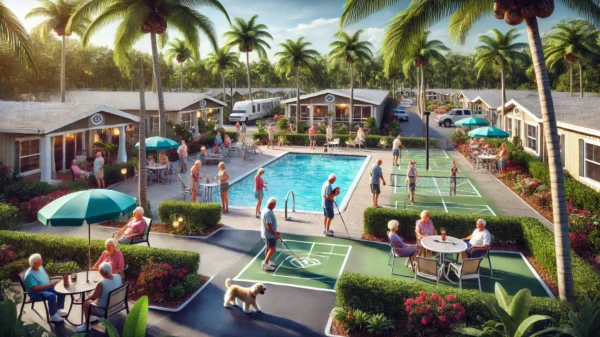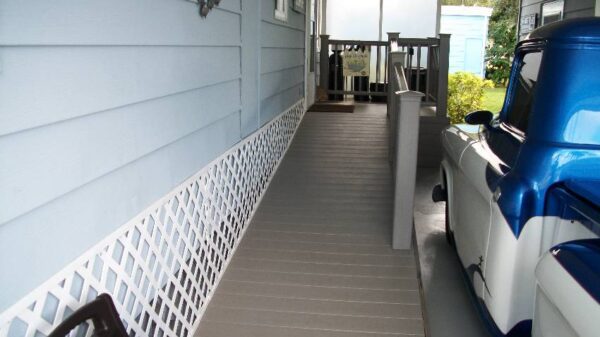Table of Contents
Manufactured Home Sizes: Finding the Perfect Fit for Your Lifestyle
Manufactured homes are a versatile and cost-effective housing solution, catering to a diverse range of needs, preferences, and budgets. One of the key factors to consider when purchasing a manufactured home is its size. From compact, single-wide units to spacious triple-wide layouts, each manufactured home size offers unique benefits and challenges. This guide delves into the different manufactured home sizes, helping you determine which option suits your lifestyle and requirements.
This comprehensive guide will help you navigate the different manufactured home sizes, including single-wide, double-wide, triple-wide, and park model homes. We’ll explore their dimensions, layouts, features, advantages, and considerations to help you find the perfect fit. Whether you’re downsizing, upgrading, or purchasing your first home, understanding these options will empower you to make an informed decision. Let’s dive in!
What Are Manufactured Homes?
Before diving into the sizes, let’s clarify what manufactured homes are. Manufactured homes, also known as mobile homes, are prefabricated houses constructed in a factory and transported to the site where they’ll be used. These homes are built following the U.S. Department of Housing and Urban Development (HUD) standards, ensuring safety, durability, and energy efficiency.
Manufactured homes are prefabricated housing units constructed in a factory setting and then transported to their final location. Built to stringent standards set by the U.S. Department of Housing and Urban Development (HUD), these homes are engineered for durability, safety, and energy efficiency.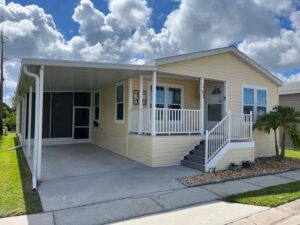
Unlike traditional site-built homes, which are constructed piece by piece on a foundation, manufactured homes are built indoors in a controlled environment. This process reduces construction time, limits exposure to weather delays, and ensures consistent quality. Once completed, these homes are transported in sections or as a single unit to their installation site, where they are placed on a foundation or support structure.
Key Features of Manufactured Homes
- Prefabricated Construction: Manufactured homes are built in sections, or sometimes as a complete unit, inside a factory.
- Built to HUD Standards: Since 1976, all manufactured homes in the U.S. must comply with HUD regulations, ensuring high-quality construction, energy efficiency, and safety.
- Transportable: Manufactured homes are designed to be transported to their final location. They are typically delivered on a chassis and placed on a permanent or semi-permanent foundation.
- Versatile Sizes and Layouts: Manufactured homes come in a range of sizes, from compact single-wides to spacious triple-wides, and offer various floor plans to suit different needs.
- Affordability: Manufactured homes are significantly more affordable than traditional site-built homes, making them a popular choice for budget-conscious buyers.
Manufactured homes come in various sizes and configurations, allowing buyers to choose a home that fits their budget, lot size, and personal needs. The primary classifications are single-wide, double-wide, and triple-wide homes. Let’s explore manufactured home sizes in detail.
Single-Wide Manufactured Homes
Overview
Single-wide manufactured homes are the most compact and affordable option available. These homes are typically rectangular, with dimensions that are narrow enough to be transported in a single section.
- Dimensions: Typically 14 to 18 feet wide and 60 to 90 feet long.

- Square Footage: Usually ranges between 600 and 1,300 square feet.
Layout and Features
Single-wide homes often feature a simple layout with rooms arranged in a linear fashion. A common configuration includes:
- A combined living and dining area.
- A compact kitchen.
- One to three bedrooms.
- One or two bathrooms.
Advantages
- Affordability: Single-wide homes are the most cost-effective option, making them an excellent choice for first-time homebuyers or those on a tight budget.
- Ease of Transport: These homes are built as a single unit, making transportation and installation simpler and more economical.
- Small Lot Requirements: With a smaller footprint, single-wide homes can fit on smaller lots, offering flexibility in placement.
- Energy Efficiency: The smaller size means lower energy consumption, reducing utility bills.
Drawbacks
- Limited Space: The narrow layout may feel cramped, particularly for larger families.
- Fewer Customization Options: Due to their compact size, there are fewer opportunities for design customization or upgrades.
- Resale Challenges: Single-wide homes may have lower resale value compared to larger options.
Best For
- Singles, couples, or small families.
- Those looking for a vacation or retirement home.
- Buyers with a limited budget or smaller lots.
Double-Wide Manufactured Homes
Overview
Double-wide manufactured homes offer significantly more space and flexibility than single-wide options. They are constructed in two sections, which are joined together on-site.
- Dimensions: Typically 20 to 36 feet wide and 60 to 90 feet long.
- Square Footage: Usually ranges between 1,000 and 2,300 square feet.
Layout and Features
Double-wide homes offer a more traditional, residential feel with layouts that can mimic site-built homes. Common features include:
- Separate living and dining areas.
- Larger kitchens with modern appliances and more storage.
- Two to four bedrooms.
- Two or more bathrooms.
- Options for additional spaces like a den, home office, or utility room.
Advantages
- Spaciousness: Double-wide homes provide significantly more living space, making them suitable for larger families or those needing extra room.
- Customizable Layouts: Buyers can often choose from a variety of floor plans and upgrades, allowing for greater personalization.
- Resale Potential: Double-wide homes generally have higher resale value than single-wide units.
- Better Aesthetics: These homes often feature a more traditional appearance, blending well in residential neighborhoods.
Drawbacks
- Higher Costs: Double-wide homes are more expensive than single-wide options, both in terms of purchase price and transport/installation fees.
- Larger Lot Requirements: These homes require more land, which may limit placement options.
- Transport Complexity: Transporting and assembling the two sections can be more complex and time-consuming.
Best For
- Medium to large families.
- Buyers seeking a balance between space and affordability.
- Homeowners wanting customizable designs and a more traditional home appearance.
Triple-Wide Manufactured Homes
Overview
Triple-wide manufactured homes are the largest option available, offering expansive space and luxury. These homes are constructed in three or more sections that are joined on-site.
- Dimensions: Typically 40 to 60 feet wide and 60 to 90 feet long.
- Square Footage: Usually ranges between 2,000 and 4,500 square feet.
Layout and Features
Triple-wide homes boast spacious layouts with high-end features that rival site-built homes. Common configurations include:
- Expansive living areas.
- Gourmet kitchens with islands and premium appliances.

- Three to five bedrooms.
- Multiple bathrooms with luxury features like garden tubs and walk-in showers.
- Additional spaces such as home offices, media rooms, and walk-in closets.
Advantages
- Luxury and Comfort: Triple-wide homes offer ample space and high-end finishes, creating a luxurious living environment.
- Flexible Layouts: Buyers can choose from various configurations and customizations to meet their needs.
- Ideal for Large Families: With multiple bedrooms and living spaces, triple-wide homes are perfect for large families or multi-generational living.
- High Resale Value: These homes tend to retain value better due to their size and premium features.
Drawbacks
- Cost: Triple-wide homes are the most expensive option, both in terms of purchase price and ongoing maintenance.
- Large Lot Requirements: These homes require a significant amount of land, limiting placement options in some areas.
- Complex Installation: Transporting and assembling multiple sections is more challenging and time-consuming, requiring skilled professionals.
Best For
- Large families or those needing extensive living space.
- Buyers seeking high-end features and luxury.
- Homeowners with larger lots who want a spacious, permanent residence.
Park Model Homes
Overview
Park model homes are a unique type of manufactured home designed for temporary or seasonal use. These homes are compact and can often be moved like an RV.
- Dimensions: Typically 8 to 12 feet wide and up to 40 feet long.
- Square Footage: Usually less than 400 square feet.
Layout and Features
Park model homes are designed for efficiency and comfort, featuring:
- A small living area.
- A kitchenette.
- One bedroom and one bathroom.
- Some models include loft spaces for additional sleeping or storage.
Advantages
- Affordability: Park model homes are a cost-effective option for vacation or seasonal use.

- Mobility: These homes can often be transported, making them ideal for RV parks or seasonal travel.
- Low Maintenance: With a smaller size, park model homes are easy to clean and maintain.
- Eco-Friendly: Their compact design means lower energy consumption and a smaller environmental footprint.
Drawbacks
- Limited Space: The small size may feel cramped for full-time living or larger families.
- Seasonal Use: Park model homes are often not suitable for year-round living in colder climates.
- Resale Value: These homes may depreciate faster than larger manufactured homes.
Best For
- Retirees or vacationers seeking a seasonal home.
- Singles or couples looking for a minimalist lifestyle.
- Buyers who want a compact, mobile housing solution.
Comparing Manufactured Home Sizes
| Size | Width (ft) | Length (ft) | Square Footage | Bedrooms/Bathrooms | Best For |
|---|---|---|---|---|---|
| Single-Wide | 14-18 | 60-90 | 600-1,300 | 1-3 bedrooms, 1-2 baths | Small families, budget buyers |
| Double-Wide | 20-36 | 60-90 | 1,000-2,300 | 2-4 bedrooms, 2+ baths | Medium families, customizable |
| Triple-Wide | 40-60 | 60-90 | 2,000-4,500 | 3-5 bedrooms, multiple baths | Large families, luxury seekers |
| Park Model | 8-12 | Up to 40 | <400 | 1 bedroom, 1 bath | Seasonal use, retirees |
Choosing the Right Size for Your Needs
When deciding on the size of your manufactured home, consider the following factors:
- Household Size: How many people will live in the home? Larger families may require double or triple-wide homes, while singles or couples may find single-wide homes sufficient.

- Lifestyle: Do you need extra space for hobbies, a home office, or guests? Larger homes offer more flexibility for these needs.
- Budget: Smaller homes like single-wide and park models are more affordable upfront, while larger homes require a bigger investment.
- Lot Size: Ensure the size of your home fits the available land. Double and triple-wide homes require larger lots.
- Long-Term Plans: Are you purchasing the home for temporary use or as a permanent residence? Larger homes are better for long-term living, while park models are ideal for seasonal use.
In Summary
Manufactured homes come in a wide range of sizes to suit diverse needs, budgets, and lifestyles, making them a flexible and practical housing solution for almost anyone. Whether you’re a first-time buyer looking for affordability, a growing family needing extra space, or a retiree downsizing for simplicity, there’s a manufactured home size that meets your requirements.
For those who value compact and efficient living, single-wide homes offer a budget-friendly option with just the right amount of space. These homes are perfect for individuals or couples seeking a streamlined layout that combines affordability with functionality. Their smaller footprint makes them ideal for smaller lots or mobile home communities, and they’re easy to maintain—perfect for anyone who prefers low-effort living.
If you’re looking for more room to spread out, double-wide homes offer a significant upgrade in space and comfort. Designed with wider layouts, these homes can include additional bedrooms, bathrooms, and flexible living spaces such as dining rooms or home offices. Double-wide homes are well-suited for families or homeowners who want the balance of affordability and roominess, making them a popular choice in the manufactured home market.
For those with a larger budget or a desire for premium features, triple-wide homes bring the luxury of expansive living. With options for gourmet kitchens, spa-like bathrooms, and multiple living areas, these homes are comparable to traditional site-built houses. Triple-wide homes are ideal for large families, multi-generational households, or anyone who wants to enjoy the finest in manufactured home living.
The key to finding the right manufactured home lies in understanding your personal priorities and lifestyle needs. If you value energy efficiency and minimal upkeep, a smaller model may be the best fit. On the other hand, if you prioritize space and customization, larger homes offer a plethora of options for personalization.
Carefully evaluating your budget is equally important. Smaller homes like single-wides are more cost-effective both in terms of purchase price and ongoing maintenance, while larger homes, such as double-wide or triple-wide units, may require a higher initial investment but provide more living space and potential for resale value.
Additionally, consider how the size of your home will affect placement and location. Manufactured homes require appropriate lot sizes, and larger models may need more land, which could limit your options depending on local zoning regulations.
By taking the time to explore the available sizes, layouts, and features, you can find a manufactured home that perfectly aligns with your vision of homeownership. Whether you’re looking for a temporary living solution, a vacation home, or a long-term residence, the flexibility of manufactured home sizes ensures there’s an option for everyone. With the right choice, you can enjoy a comfortable, stylish, and affordable living space tailored to your unique lifestyle.
